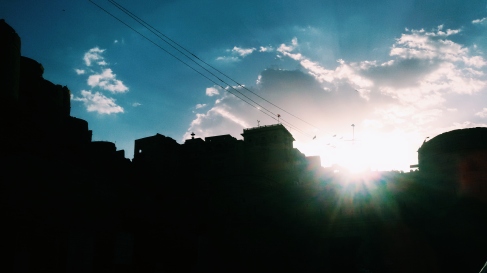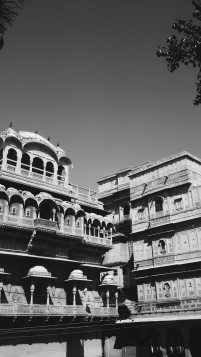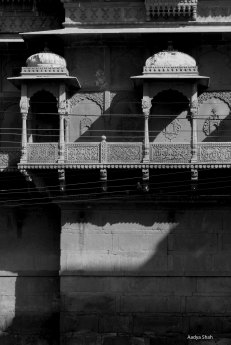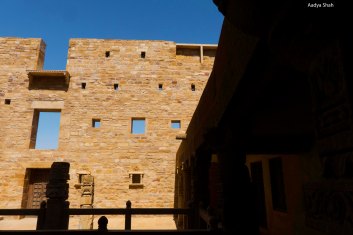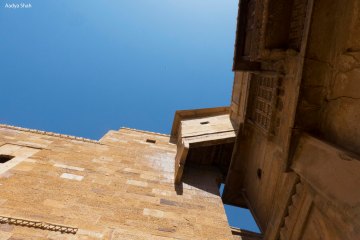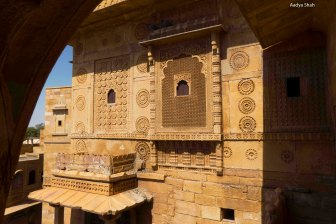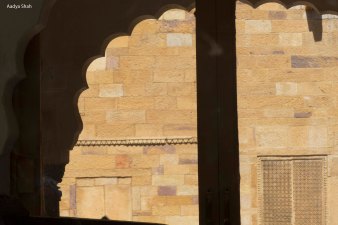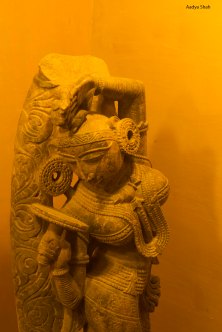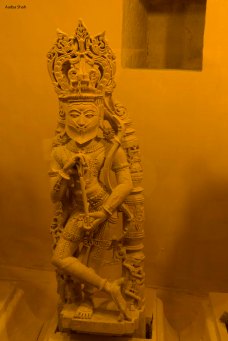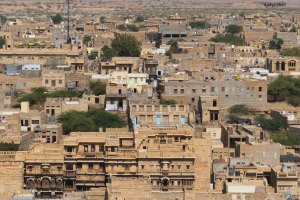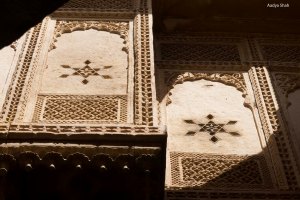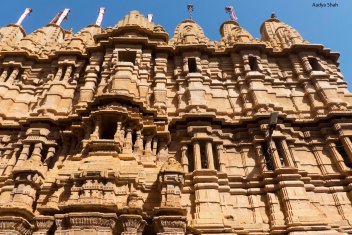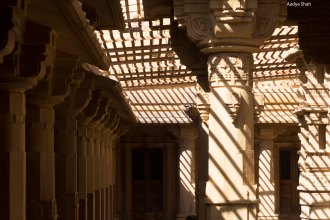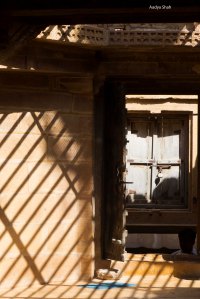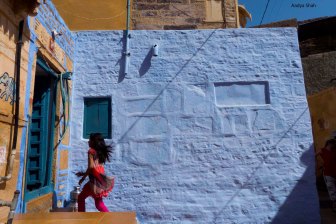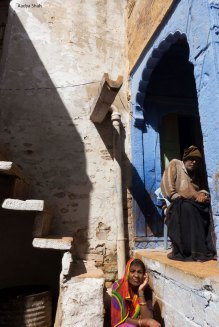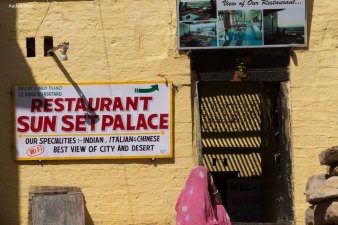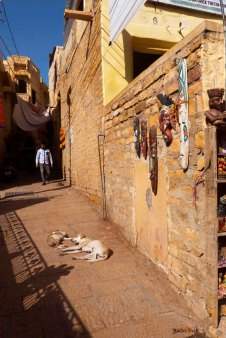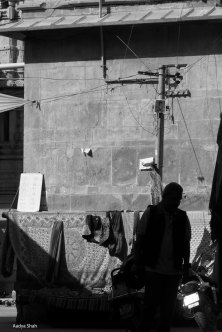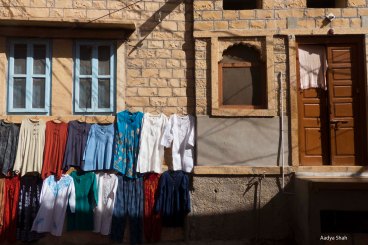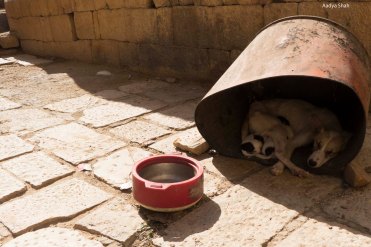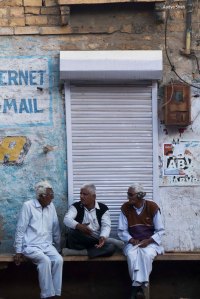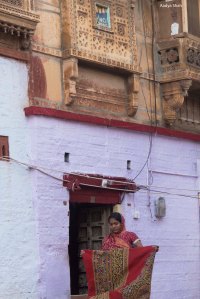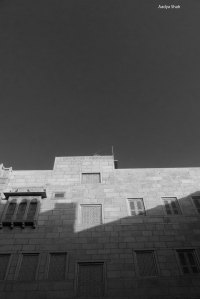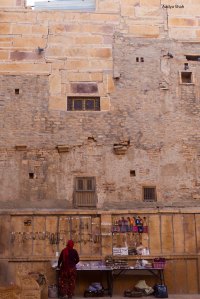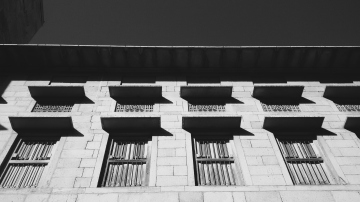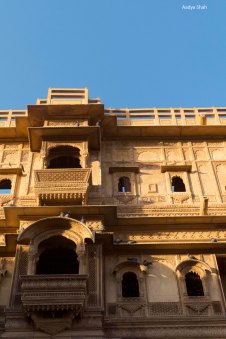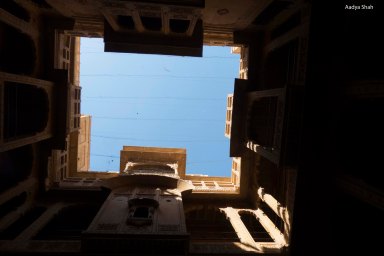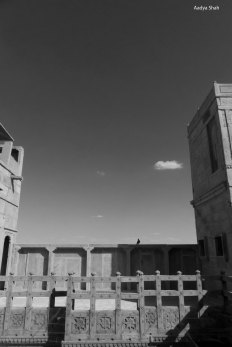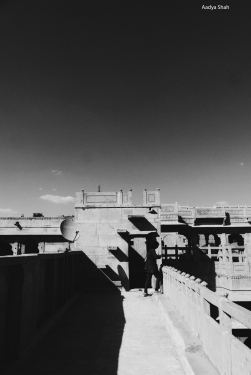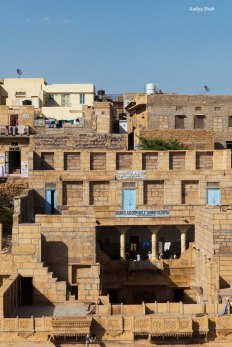Jaisalmer is a rather small city. Smaller than Jodhpur, at least. As you wander through the city, you get tastes of its vibrant history trickling down right from the Mughal period, through the British Raj and to the present day. It was founded by Rawal Jaisal in 1156, who named the city after himself and established a mud fort.
One of the most noticeable features of this city is the magisterial Jaisalmer Fort. The Jaisalmer Fort is a gigantic structure, modeled on yellow sandstone, which gives a birds eye view of the entire city. AND it’s probably the world’s sole living fort. That’s right. People reside within the walls of the fort, running businesses, hotels, restaurants and shops. Amidst these, sits the King’s palace and the adjacent Queen’s palace. I was told that just opposite the palace building was a palace dedicated to the royal’s children. This wing has high walls and some intricate ornamentations were discernible. Yet it sits in ruins.
The palace gives you the facilities of a guided audio tour, which I happily availed of. The places open to the public included the king’s stately quarters which included tiles from Holland and the the queen’s wing (or the Zenana) among others. The sculptures shown were extremely interesting, including one depicting Rama with a beard. The female ones showed the women depicted in typically feminine activities such as dancing and gazing into a mirror.
The palace doesn’t seem to be as well looked after and conserved as Meherangarh Fort. The stench of bat poop ran amok.
Walking through the fort, we were acquainted with large troupes of foreigners (mostly Europeans). The shops mostly sold curios aimed specifically at the demographic of tourists (wrap around skirts with ethnic print, hippie looking pants with elephant print running all over them, colourful and vibrant looking scarves and shawls). The Jain temples situated here are extremely old (I forget precisely how old).
Rich and colourful shops, clothes and houses are aligned next to each other within the fort.
Surrounding the fort is a labyrinthine pattern of lanes. The lanes are narrow, leaving just enough room for a bike to squeeze through. Different colors adorn some of the walls. The exterior of the houses are designed with the ornamentations and intricate They are tenanted with businesses, shops, houses and hotels. The mimetic prowess of the designers of these hotel;s is quite good. The exteriors of the hotels are all designed to give you the feeling you’re residing in those palatial Rajasthani havelis (though the interiors tell another story altogether). They have tried to bring in the same ornate architectural aesthetics and intricacies seen in the havelis and the forts. As you make your way up to the fort, a steady stream of rickshaw and taxi drivers accost you for work during off season.
One such haveli was owned by the Bafnas. Built in the 19th Century by Patwa Gumanlal Bafna, this haveli has 2 wings, one which is open to the public and the other which is resided in by the descendants of the Bafnas.
The haveli has approximately 5 floors, the topmost being a terrace with some nice views of the city and the fort. Unfurnished, unadorned and uninhabited, the haveli was a peaceful place to set foot in. Only one room had been adorned in a bright red. It had mirrors on all of its walls, which had worn out and could no longer be used as reflective surfaces. In the darker corners of the haveli lurked bats. There was a stench of bat poop that followed us as we meandered through the rooms and staircases.

